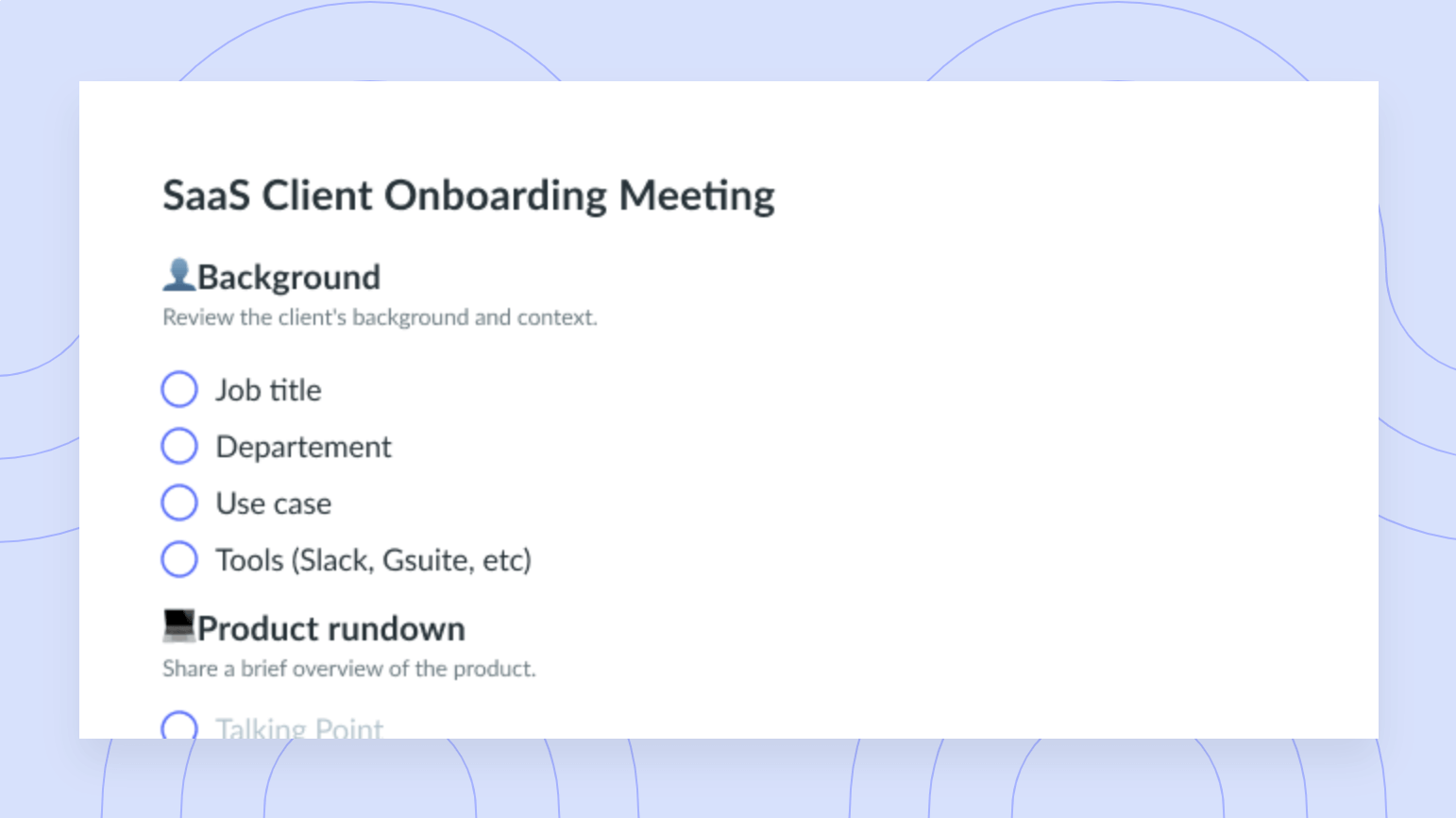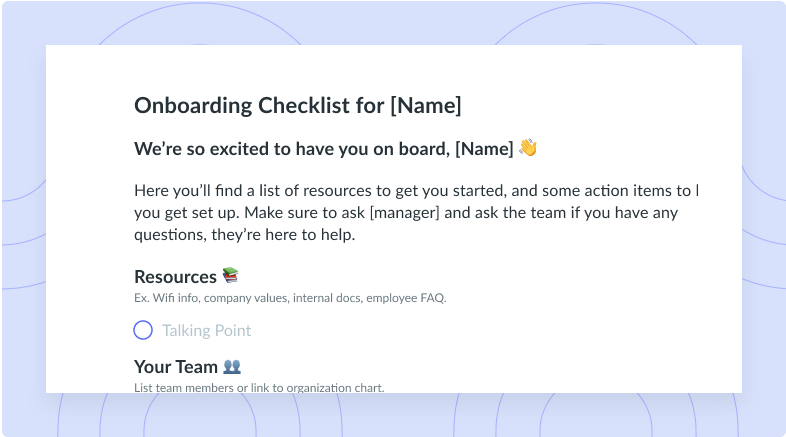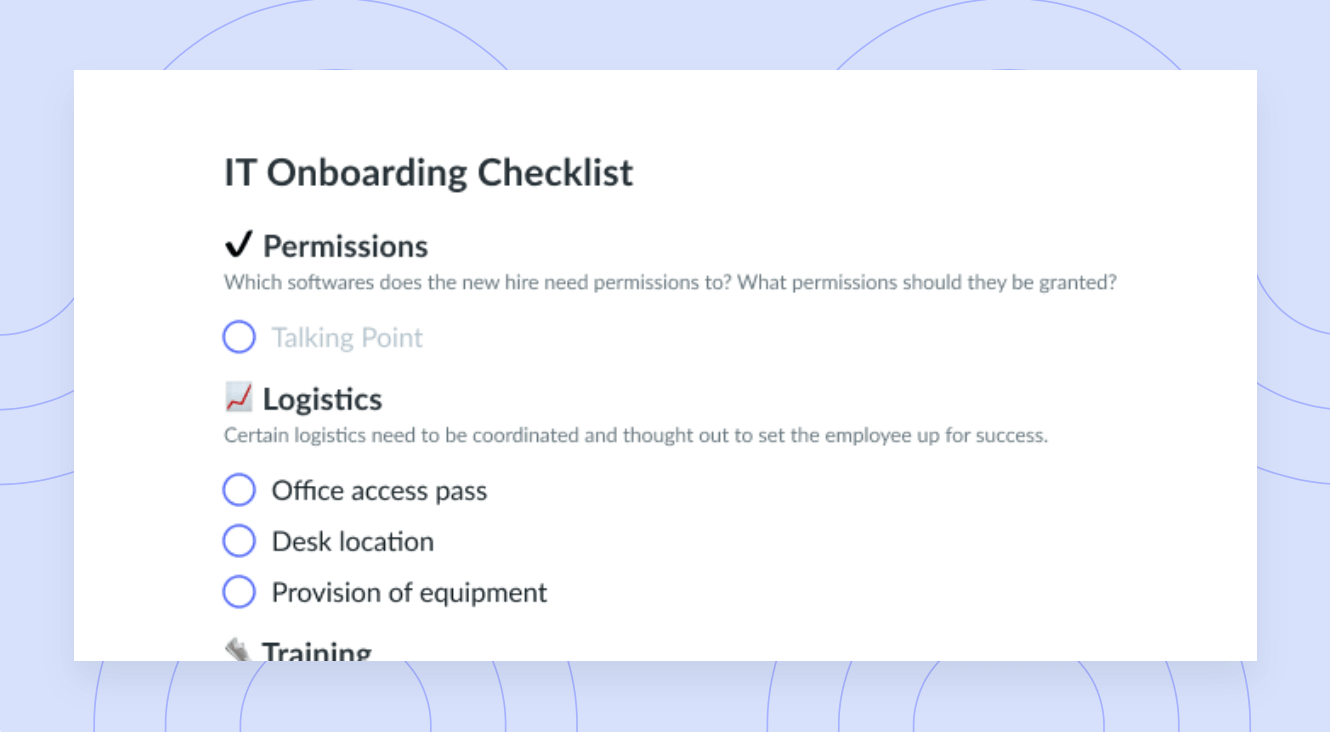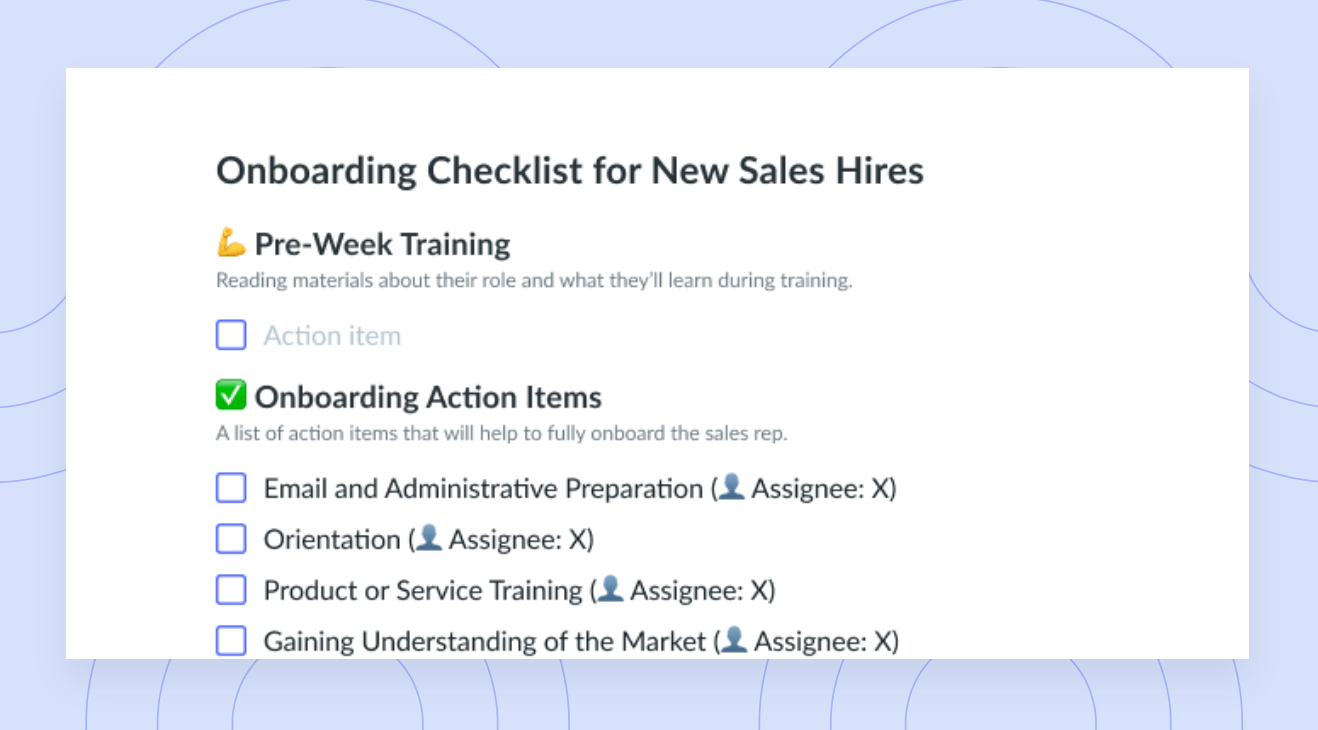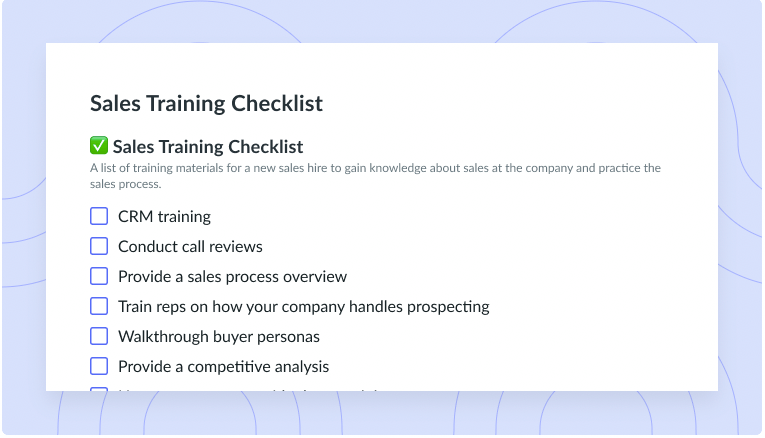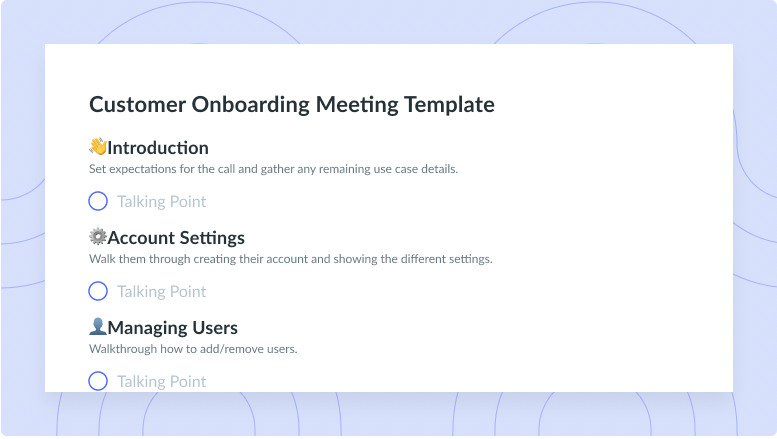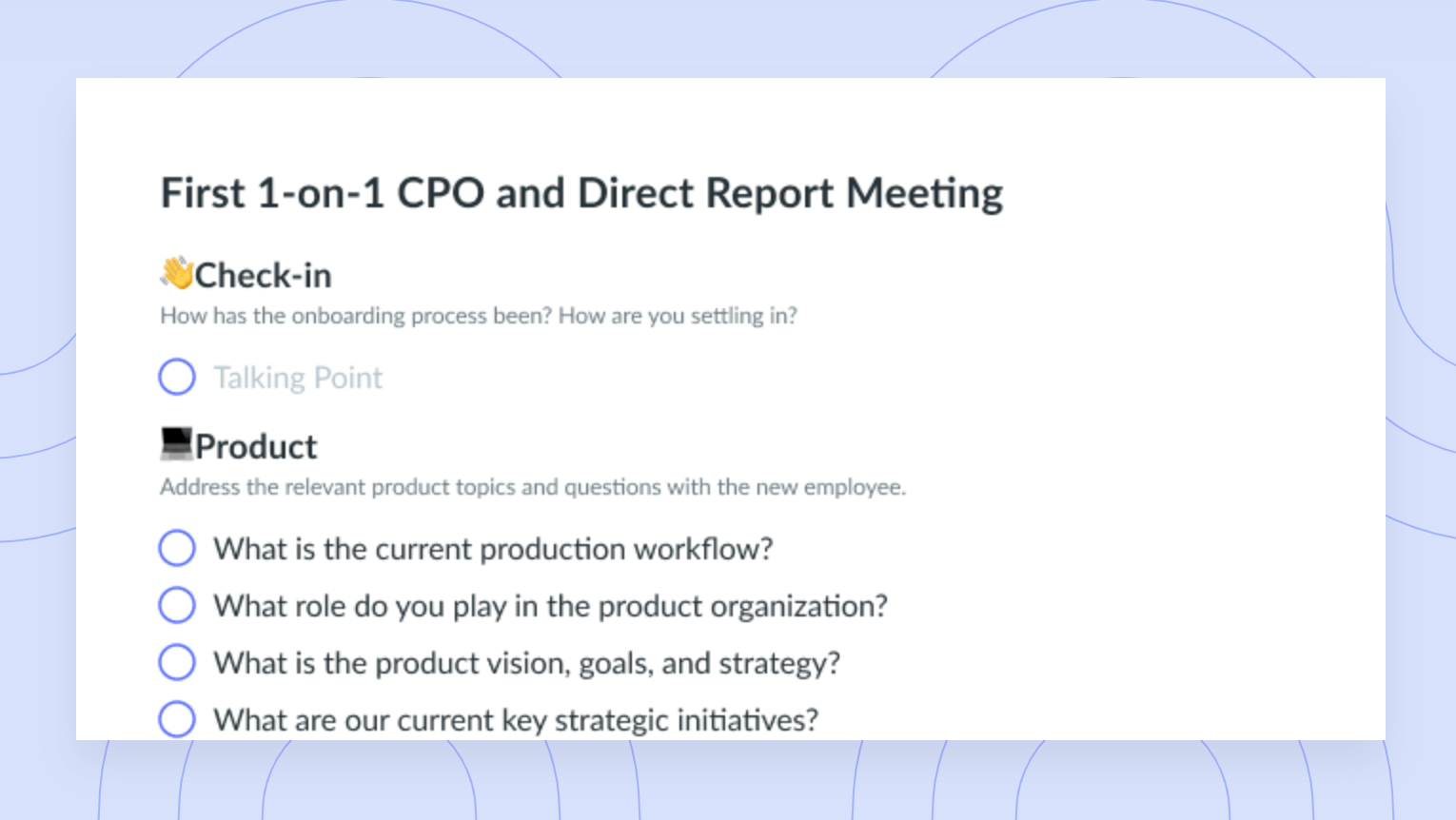Why You Should Re-Onboard Employees (+ Re-Onboarding Best Practices)
Keep employees up to date on new company norms by re-onboarding them often and with ease by following this guide.
We’ve all faced extraordinary change at work over these past few years. At your company, you’ve likely noticed that your team has had to adapt to virtual or hybrid work, connect on new platforms, and maybe even face higher staff turnover rates. Even employees who have spent years building rapport within the organization may have become unfamiliar with the workplace culture they once participated in, having not worked in person for long stretches of time.
Let’s talk about re-onboarding and how it can help you improve your employees’ performance and wellbeing.
- What is re-onboarding?
- Why it’s important to re-onboard employees
- 7 best practices to re-onboard employees
What is re-onboarding?
When you joined your company, you probably had a few days of onboarding. All new hires are integrated into the company during this period and have the opportunity to learn about things like the company’s mission, values, and procedures.
Re-onboarding is different. It involves taking all employees through another set of onboarding sessions that offer a refresher on policies and a chance to ask questions about workplace norms that have shifted in the modern work environment. Most importantly, re-onboarding is a chance for employees to nurture their existing connection to the organization and with each other.

Meetings worth showing up to
A well-run meeting can foster communication and collaboration by including an agenda the whole team can contribute to. Try using a tool like Fellow!

Why it’s important to re-onboard employees
- Educates employees on new processes
- Reminds employees of company goals and values
- Fosters productivity
- Fosters more asynchronous communication
1 Educates employees on new processes
If an employee has been with the company for a while, they may not be familiar with new policies and processes. For example, if your organization has recently switched to a hybrid model of work, it will be important to introduce the nuances of this arrangement to all individuals. If you don’t re-onboard your employees, how will they know what guidelines should be set for meetings, the protocol for when cameras should be on or off during Zoom calls, or the expectations surrounding taking breaks and running personal errands during the workday? Have these conversations during your re-onboarding session so your employees know what you expect and feel set up to succeed!
2 Reminds employees of company goals and values
It’s important to shape employees’ understanding of how the organization is evolving on an ongoing basis. If your company doesn’t regularly communicate its vision alongside actionable objectives, teams will be left feeling detached from the workplace culture entirely. Combat disengagement by providing exciting programming during your re-onboarding session. Employees should leave the session feeling reminded of the big picture goals they’re trying to achieve as a member of the team.
3 Fosters productivity
It’s simple: employees are more productive when they’re kept up to date. For example, if a longtime employee is great at administrative tasks, but hasn’t been informed that a new software can be integrated into a current system to make their job easier, they will waste precious work hours performing tasks inefficiently. Additionally, if re-onboarding sessions take place, teams can share knowledge, learn who’s responsible for what, brainstorm new ideas for making tasks more efficient, and work together to get results.
4 Fosters more asynchronous communication
Asynchronous communication is communication that doesn’t happen in real time. If your company re-onboards employees quarterly, yearly, or even every few years, it allows for better, more productive conversations during working days. Re-onboarding also means there will be fewer questions during team meetings and ensures that this time can be used for thoughtful conversations, rather than catching everyone up to speed on company initiatives. In a culture that is overburdened with unproductive meetings, asynchronous communication is a huge timesaver. When employees have all of the updated information about their company’s priorities, they can use asynchronous communication platforms like email to discuss additional details.
7 best practices to re-onboard employees
- Reintroduce everyone
- Facilitate team-building exercises
- Make it engaging
- Set clear expectations
- Showcase how the company has evolved
- Conduct regular check-ins
- Don’t make it a one-time thing
1 Reintroduce everyone
It may seem foolish to have an employee who has worked at your company for a decade reintroduce themselves, but there will always be new things to learn about each of your colleagues. Kick off the session with an ice-breaker that cuts the tension and makes it fun for every member of your team. There may be new hires who haven’t been able to give a formal introduction yet, so a re-onboarding session with the entire team will be a great chance for them to do so. If there are new team members, encourage each employee to give a quick overview of their role or name a project or two they’re currently working on for added context.
2 Facilitate team-building exercises
Strengthen your team’s bond with creative team-building games at your first re-onboarding session. Participating in fun exercises will improve your employees’ communication and problem-solving skills, and will help new individuals build a strong bond with the team. You can start off with a game of trivia, with an online gaming session, or by having each employee bring their own personal touch to a game of two truths and a lie. For more team-building exercises, check out our 8 team-building games to bring your team closer, and don’t hesitate to ask your team for suggestions on how to best collaborate during this time.
3 Make it engaging
No employee wants to sit through their initial company onboarding sessions a second time. For a re-onboarding session to be effective, it needs to be engaging. Set an agenda that outlines the meeting’s priorities and be sure to include plenty of time for questions. Be creative with the format as well; you don’t have to stick to the typical PowerPoints and paperwork. Introduce friendly materials like infographics and provide interactive experiences that will help your team digest important information. In addition to acting as a check-in and overview of how the team and company have progressed, re-onboarding should be a time for you and your colleagues to connect.
4 Set clear expectations
Make the session worthwhile by setting clear expectations at the start. Your meeting agenda should outline the meeting topics and clearly communicate what you hope to accomplish as a team. If every person knows what re-onboarding will look like, they will be enthusiastic and prepared to bring their ideas to the table. In addition to hosting the re-onboarding itself, use this time to set expectations for the team’s work. If you have employees who work remotely while others work in person, set guidelines for productive meetings that include everyone. Explain how you’ll ensure that all teammates have a voice, how you plan for the team to track progress, and how everyone can keep each other updated throughout the session.
5 Showcase how the company has evolved
Come on, brag a little bit! If your company is growing and your team has played a key role in its success, let your employees know. Giving praise for good behaviour is a great way to boost morale and reinforce productive work habits. Use re-onboarding sessions to discuss any large company changes or shifts in priority. Maybe the marketing team recently launched a showstopping campaign that your sales team will soon be integrating into their daily calls. Now’s your chance to help new and old employees see the value in what your company is doing and challenge them to incorporate that vision into their everyday work.
6 Conduct regular check-ins
Incorporate themes you discussed during re-onboarding sessions into your team meetings and one-on-ones. Doing so will ensure individuals clearly understand any new expectations that have been set for their work and don’t have any unresolved questions. Remember that the purpose of re-onboarding is to introduce new company policies and procedures, answer questions, address concerns, and make employees feel valued. Check-ins should be used to chat about ongoing work and day-to-day office happenings. After a re-onboarding session, you can use regular check-ins to discuss lingering questions or anything from the meeting that relates specifically to certain tasks.

7 Don’t make it a one-time thing
Companies are constantly changing and your team is no exception. As the team grows, so should the time you put into re-onboarding. Make it a priority to conduct re-onboarding sessions as often as needed. If your organization is growing rapidly, it may be beneficial to conduct a session every few months. If there are no new employees and no significant changes in the company or office life, hosting a re-onboarding session once every few years may be sufficient. No matter what’s happening within the organization, remember that there will always be questions to answer and information to refresh.
Re-onboard, re-educate, rejoice!
There is no better feeling than knowing your team feels valued. To have your employees operating at their best, you need to prioritize their wellbeing above all else. These past years have led to many changes in the workplace. Whether your company is struggling with high staff turnover rates or new hybrid work models, re-onboarding will guarantee that your team feels prepared to tackle any challenge. Employees new and old will benefit the same. Re-onboard your staff and rejoice as you notice the positive changes within your team and company.


![6 Best Tools for Onboarding New Employees [+ Free Template]](https://fellow.app/wp-content/uploads/2022/10/Tools-for-Onboarding-New-Employees2.jpg)






